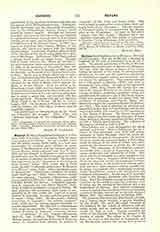

Hauzeur, MATHIAS, Franciscan theologian, b. at Verviers, 1589; d. at Liege, November 12, 1676, for many years professor of theology. He was a prolific writer and left behind twenty works, while, as a keen controversialist, he attained great celebrity in consequence of his disputation with the Calvinist preacher Gabriel Hotton, which continued from 19 to April 22, 1633, and was brought by Hauzeur to such a successful conclusion that the Catholics throughout the vicinity lit bonfires to celebrate his triumph. He describes this controversy in his “Accusation et conviction du Sieur Hotton” (Liege, 1633), issued also in Latin under the title “Conferentia publica inter M. Hauzeur et G. Hotton” (ibid., 1633). Other important works of Hauzeur are: “Exorcismes catholiques du maling esprit heretique etc.” (ibid., 1634), directed against the same opponent; “Equuleus ecclesiasticus, aculeatus exorcismis XXIII etc.” (ibid., 1635), against the Calvinist Samuel des Maretz; “Praejudicia augustissima D. Augustini pro vera, Christi Ecclesia” (ibid., 1634) of which he published a synopsis in French. He then combined the last-named three works in one, including in the new volume the “Livre de ce grand Docteur S. Augustin: du soing qu’il faut porter pour les morts” (Liege, 1636). He also issued a Flemish translation of Augustin’s “De utilitate credendi” (ibid., 1636), but his writings against Jansenism remained unpublished. His chief title to remembrance rests on his two great works, “Anatomia totius Augustissimae Doctrinae S. Augustini, secundum litteram … et spiritum” (2 vols., Augustae Eburonum, 1643-45), and “Collatio Totius Theologiae inter Maiores nostros Alexandrum Halensem, S. Bonaventuram. Fr. Joannem Duns Scotum, ad mentem S. Augustini” (2 vols., Liege and Namur, 1652). This work is really a commentary on the second, third, and fourth books of the “Sentences”. Like the majority of Hauzeur’s works, it was issued from the private press of the Franciscans. In reply to Boverius’s “Annales Ord. Min. Capucc.” Hauzeur wrote the “Apologia Analogica pro vero ordine et successore S. Francisci” (August Eburonum, 1650, and 1653).
MICHAEL BIHL

